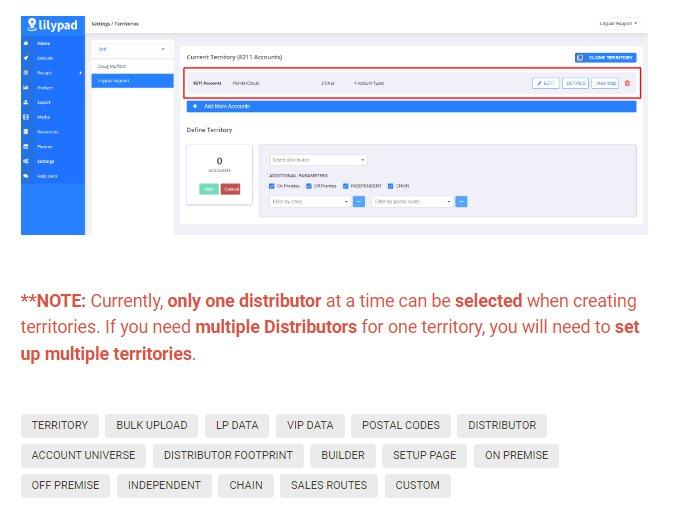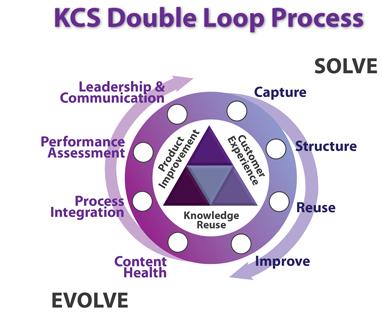
Do your IT support initiatives use up a ton of your business’ resources?
You are not alone.
In fact, HDI found that a single tech support instance can cost your company anywhere from $2.93 to a whopping $49.69. Worse yet, escalated support tickets can cause this cost to triple.
Of course, you cannot exactly go without a dedicated IT department and tech support staff. Not only are they needed to solve issues your employees and customers encounter over time, but they are also responsible for keeping your behind-the-scenes technical operations running smoothly, as well.
You cannot eliminate the cost of tech support completely.
But:
You absolutely can work to ensure you are making the most out of every dollar you spend on your IT department by enabling your team to operate to their highest potential.
In this article, we will look at how a strategic approach to knowledge management can help you make this happen. Let’s dive in.
What is Knowledge Management?
Knowledge management (KM) is “a systematic method in which an organization or team creates and applies company knowledge to reach their goals.”
To expand on that a bit, knowledge management is:
The systematic management of an organization’s knowledge assets for the purpose of creating value and meeting tactical and strategic requirements; it consists of the initiatives, processes, strategies, and systems that sustain and enhance the storage, assessment, sharing, refinement, and creation of knowledge.
Note that knowledge management operates with a clearly defined purpose: To create value and enable a team to meet tactical and strategic requirements.
Applied to tech support, KM focuses on ensuring your IT staff always has the information and knowledge they need to provide support as needed — and to keep all tech-related processes running smoothly throughout the organization.
To be sure, IT deals with a wide variety of knowledge assets.
- Product- or equipment-related info for maintenance and troubleshooting purposes
- Procedural documentation, from standard operating procedures to best practices
- Customer knowledge, used to optimize individual tech support experiences
- Organizational documents to streamline communications and company processes
Knowledge management, then, is about enabling your IT team to make the most out of this knowledge — and in turn deliver the best and most effective tech support possible.
How Knowledge Management Impacts Tech Support
Okay, so it is probably pretty clear that KM will have a positive impact on your IT department, at least in some way.
Let us take a closer look at exactly how things can improve for your IT staff with a proper approach to knowledge management.
Improves Tech Support Effectiveness and Efficiency
Strategic knowledge management aims to ensure the right knowledge is readily available and accessible at all times, to anyone who may need it.
For one thing, this removes much of the friction involved in locating the right information when it is needed — which is actually a pretty widespread problem even today.

By creating and storing organizational knowledge in a more structured, strategic manner, you will make it much easier for team members to find what they are looking for.
The comprehensive and ever-evolving nature of knowledge management also helps improve the effectiveness of your tech support efforts. The ultimate goal of KM is to leave no stone unturned when documenting specific knowledge — meaning your tech team will always have the go-to resource on the topic or process at hand.
Put this all together, and you have a tech support staff that will always be able to keep things running effectively and efficiently.
(In fact, Atlassian’s John Custy finds that adopters of KM experience a 30-50% increase in first-contact resolution — with most experiencing much shorter times to resolution, to boot.)
If you are looking to maximize your IT department’s productivity, adopting an effective knowledge management strategy should be your top priority.
Provides Self-Service Options for End-Users
With the above being said, the ideal scenario is one where your tech support staff does not have to step in, at all.
A huge part of strategic knowledge management focuses on allowing end-users to solve technical problems on their own.
This is where knowledge bases come in.

Whether used by members of the organization or members of the audience, a company’s knowledge base serves as its Single Source of Truth: The place to go to find the technical knowledge needed to solve a problem, troubleshoot an issue, or complete a certain task.
Knowledge management is also necessary to optimize automated self-service processes, such as via chatbot. If the right info is not in the right place, these processes will be unable to function.
Providing self-service options to your customers is all but essential by today’s standards:
- 81% of consumers look to solve issues themselves before reaching out to a representative
- 77% have used knowledge bases for self-service purposes
- 60% prefer self-service options of any kind over human tech support
On top of meeting your customers’ expectations, providing self-service support options takes some of the weight off of your IT team’s shoulders.
The same can be said when implementing internal self-service options, as well.
Basically, if the end-user — be it a member of your team or a customer — is able to solve their tech-related issues without assistance, it means less work for your support staff. In turn, they will have more time and resources available to work through the more involved technical issues they may face.
Facilitates Continuous Improvement (and Professional Development)
In addition to supercharging on-the-ground tech support efforts, knowledge management also focuses on optimizing overall processes, workflows, and operations.
With KM as a backbone for tech support operations, it becomes easier to analyze the effectiveness of these operations as a whole. Support staff can then refer back to an array of organizational knowledge to make laser-focused adjustments as needed — and in turn build these new processes into their current workflows.
This intentional focus on continuous improvement is actually baked into knowledge management from the start. In other words, to inject KM into your tech support initiatives is to dedicate your team to ongoing development and growth.
Speaking of growth, strategic KM also delivers multiple avenues for team members looking to improve their knowledge and abilities. Both newly-onboarded and long-term team members alike will be able to refer to your knowledge base (and other resources) as needed — meaning they will always have an opportunity to gain new skills that will help them in their position.
A dedicated approach to knowledge management will ensure your tech support operations stay on the up and up — and that your individual team members continue to grow more knowledgeable over time.
This will go a long way in terms of getting the absolute most out of your IT department.
Big-Picture Business Benefits
These benefits all set the stage for great things for your business.
IT Support Staff Satisfaction and Dedication
Internally, a more knowledge-focused team is typically happier, and more dedicated to their work. Case in point, Atlassian reports that organizations with KM in place see a 20-40% improvement in employee satisfaction, and 20-35% improvement in employee retention.
Customer Satisfaction and Loyalty
Teams that provide more reliable and helpful tech support also keep their customers happier, as well. In fact, a poll from CMO Council found “improving technical help or assistance” is the number one thing organizations can do to improve the product experience. Deliver better tech support, and your loyal customers will stay loyal.
The Bottom Line
A KM-powered IT staff will have a major impact on your business’ bottom line. For one thing, they will be operating more efficiently than ever before — which will go a long way toward keeping your operational costs to a minimum.
More than just minimizing costs, though, KM-powered tech support can actually bring additional value to your business. Knowing that your efforts are at least partly responsible for your reducing customer churn rates, you can begin to see tech support as an ROI-generating investment — and not a necessary cost of doing business.

Using Knowledge Management to Enhance IT Support
Implementing knowledge management can have an incredible impact on your tech support operations. But, it must be done right in order to get the most out of your efforts.
Let us now dig into everything it takes to effectively implement knowledge management into your IT support processes.
Make the Shift to Knowledge-Centered Service
As we have said plenty of times by now, a strategic and systematic approach to knowledge management is crucial.
(If you were thinking of taking a haphazard approach, you might as well throw in the towel now. Taking half-measures will merely render the efforts you do put in worthless.)
Luckily, there are a number of proven knowledge management methodologies to help guide you.
For the purpose of enhancing your tech support efforts, we would suggest using the Knowledge-Centered Service (KCS) methodology.
As the name suggests, the goal of KCS is to put knowledge at the heart of everything your tech support team does. It is about treating knowledge management processes not as an “extra” task, but as an integral part of IT support operations.
In order to effectively make this shift toward KCS, you will need to get buy-in from your tech support team (and others within your organization).
The key here is to make sure your IT team sees the benefits of knowledge management as it pertains to them. Basically, you will want to focus on how adopting knowledge management processes will:
- Make their jobs easier
- Allow them to become more productive and provide more value to others
- Lead to professional growth (and potentially to career progress)
Of course, you will need to ensure your tech support team members have the time and resources to dedicate to KM as needed.
Again, you are not adding to their current workload or schedule; you are integrating KM into their overall operations. This may mean reallocating resources or team members in some way on your end — but the burden should never fall on your team members.
(After all, if implementing KM causes too much stress for your tech support team, adoption will almost certainly suffer.)
You may also look to develop a dedicated KM team, consisting of team members from your IT and other departments. Though all members of your team will be responsible for KM in some way, your knowledge team will take a more overarching approach to ensure your efforts are leading to better things for your IT team.
The idea here is to get your tech support team to embrace knowledge management from the start of your new initiative. Without this buy-in, it will be near impossible to get your KM efforts up and running at all.
Develop Standard Operating Procedures
Once you have gotten your IT team to trust the KM process, you need to introduce them to the actual steps of the process. Again, a systematic, standardized approach to KM is vital to your success — for two key reasons.
For one, it gives your IT staff clear instructions to follow when using or improving knowledge assets in any way. More than mere suggestions, these standard operating procedures ensure your team members follow your KM processes exactly as intended.
With standardized KM processes in place, you will also be able to easily identify bottlenecks and other points of friction in your workflows. In turn, you can then make laser-focused improvements to your KM processes moving forward.
If you have adopted the KCS methodology, your overall KM process will involve what is called the Solve Loop.
The Solve Loop consists of the following steps:
- Capturing knowledge before, during, and after a tech support event
- Documenting and structuring knowledge in a digestible, user-friendly manner
- Reusing knowledge during future tech support events
- Improving knowledge over time
Now, this will look a bit different from team to team — and it should. Your goal is to develop a knowledge management process that works for your IT team — and that leads to a better outcome for your business, overall.
By creating repeatable, iterative KM processes that can easily be improved over time, you will continuously equip your tech support team with the resources they need to maximize their output across the board.
Create a Logical Structure for IT Knowledge
Your organization’s collective knowledge needs to be stored in a logical, intuitive, and user-friendly manner.
(The more difficult it is for your tech support staff to find the information they need, the less likely they are to use it. Though the asset exists, it is not providing any value to your team.)
So, from the start, you will want to create a clear hierarchy for your knowledge content.
This enables team members to quickly find the information they need to solve a technical issue — and makes it easy to categorize new knowledge content as it is created.
Tagging can also be used to further categorize knowledge content.
The above example from Lilypad shows clear use of content tagging — allowing users to dive deeper into specific topics and areas of concern.
Your content hierarchy and tagging efforts can also impact the searchability of your knowledge base, as well. Though many knowledge base tools offer powerful search features, optimizing these features involves maintaining a solid content hierarchy above all else.
As a quick reminder, your tech support team might not be the only people accessing this knowledge. For team-wide or customer-facing knowledge bases, a simplified, not-overly-technical content hierarchy is all but necessary to enable self-service tech support.
Develop Knowledge Collaboratively
We mentioned earlier that knowledge management — even when focused squarely on tech support — involves many different entities.
That said, it is crucial that your teams are able to work together cooperatively as they go about creating new knowledge.
Your tech support team will, of course, be front-and-center here. As the subject matter experts, your IT team will be the ones that:
- Put together the knowledge hierarchy
- Determine what knowledge content gets created
- Create knowledge content in full
- Routinely add to and improve your library of knowledge content
It is also important to involve the end-user in the creation of knowledge assets — whether directly or indirectly.
Here, you will be assessing past support tickets, user engagements, and other feedback to identify knowledge topics to focus on. In turn, you can create focused knowledge content that enables your support team to better serve the user — and even allows the user to help themselves.
You may also involve your creative team — or, if you have created one, your knowledge team — to help develop engaging and helpful knowledge content. Though their role will not be too intensive, your creative team can help you showcase your knowledge in the most user-friendly way possible.
Collaboration within your tech support staff is essential here, as well. With each team member bringing different perspectives and specialties to the table, your team will be able to create content that is accurate, comprehensive, and easy to digest.
Now, this collaboration does not necessarily have to happen in real-time.
(In most cases, it probably will not.)
Still, knowledge management is, at its core, a collaborative effort. It requires that all stakeholders take ownership of the knowledge creation process — and are always ready to dive in and add to the organization’s collective knowledge when need be.
Make Continuous Improvements to Knowledge Management and IT Processes
In some ways, knowledge management is an iterative process inside another iterative process, inside another one.
The ongoing goal of knowledge management is to continually make improvements to your tech support team’s collective knowledge. This, as we discussed earlier, is baked directly into the Solve Loop of the Knowledge-Centered Service methodology.
The KCS methodology also includes the Evolve Loop, which focuses on making improvements to your knowledge management processes, overall.
As regular intervals (and, as much as possible, throughout day-to-day operations), you will want to gauge your tech support team’s KM capabilities.
Here, you will be asking yourself questions such as:
- Has your team adopted KM practices as anticipated?
- Are your knowledge documents providing value to your tech support efforts as intended?
- Are your KM processes becoming more streamlined, and less labor intensive over time?
Of course, you will need to dive deeper than these yes-or-no questions to determine the effectiveness of your KM efforts. Diving deep into your team’s knowledge creation and usage will enable you to pinpoint specific areas in need of improvement — allowing your team to get even more use out of your knowledge assets moving forward.
On that note, it is important to keep in mind the reason you are putting all this effort into your KM initiatives:
To supercharge your IT support efforts across the board.
In other words, if your achievements in knowledge management do not help your tech support team become more productive, you have essentially wasted your time.
Now, this probably will not happen. For the most part, fine-tuning your knowledge management processes will almost certainly have a positive impact on your tech support efforts. Still, you want to get specific here, focusing on:
- How your tech support’s performance has improved in terms of speed, accuracy, and completeness
- The role knowledge plays in your IT team’s ability to streamline internal processes
- How providing self-service options have impacted your user or customer support metrics
You can take all this even one step further, and use the knowledge you have collected over time to further streamline your tech support workflows altogether. A few examples of how this might play out:
- Using self-service engagement metrics to identify areas where team knowledge needs to be strengthened
- Assigning subject matter experts and knowledge creators to more specific technical issues — and more specific duties, overall
- Improving your ticketing system’s support ticket prioritization based on use of knowledge assets
Embracing knowledge management will put your tech support team on the path to ongoing improvement — as long as you stay intentionally focused on growth.
Enhance Your IT Support With Knowledge Management
Developing a comprehensive, ever-evolving knowledge management system is one of the key ways to optimize your tech support efforts across the board.
With the necessary information always within reach, your IT support team will always be able to provide an effective solution to any technical problem your employees or customers may face.
Now, as remote operations continue to become more mainstream, it is also important to ensure your organizational knowledge can be accessed, managed, and used from anywhere, at any time.
That is where AirDroid comes in.
AirDroid Remote Support allows tech support teams to help users overcome technical obstacles and accomplish their goals — no matter where either party is located. Ready to dive in? Sign up for a free trial to get started.
Author’s Bio: Emil Hajric is the founder and CEO of Helpjuice – a powerful knowledge base solution provider. In his spare time, Emil enjoys writing and is the author of Knowledge Management: A Theoretical and Practical Guide for Knowledge Management in Your Organization. Here is his LinkedIn.


Leave a Reply